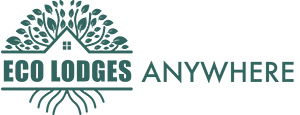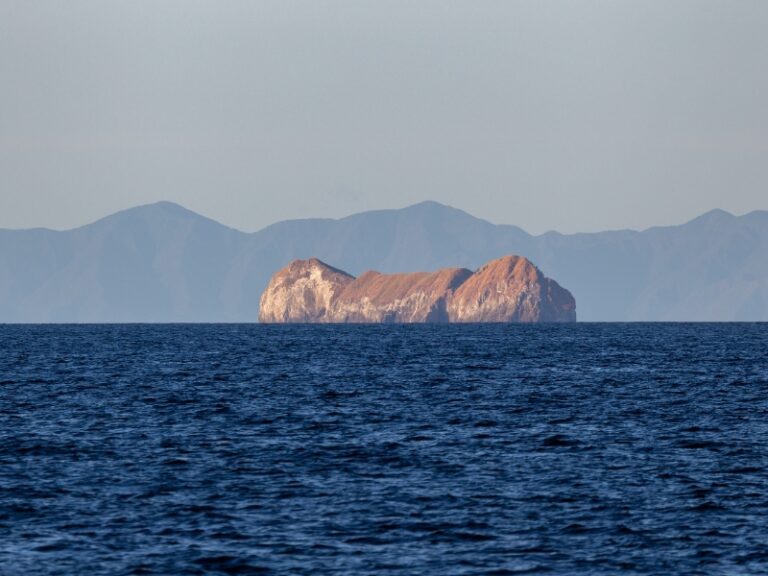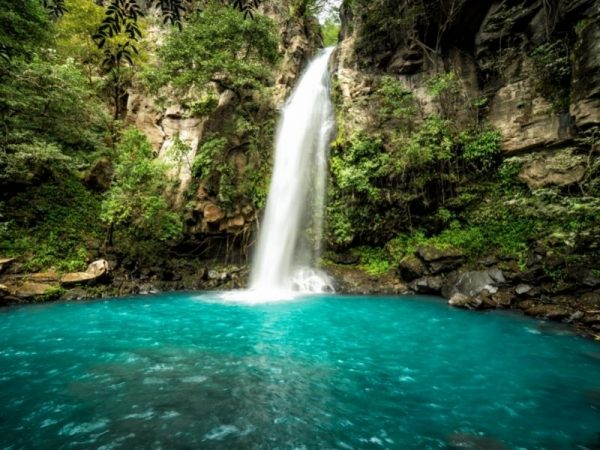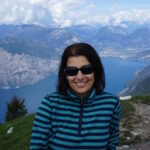Best Time to Visit Costa Rica
Costa Rica has two main seasons, dry and rainy season. The dry season is the peak season with hot weather, a hefty price tag, and overflowing with tourists. The rainy season is the low season with cheap prices, less favorable weather conditions, and with fewer visitors. However, there are two special timeframes called “veranillo” and “canícula” that just might be the best time to visit Costa Rica.
If you are considering a trip to Costa Rica, it is valuable to understand what awaits you in different seasons and months. We have compiled comprehensive information to help you determine the optimal time for your visit. This guide presents a detailed analysis of the advantages and disadvantages of each season. Additionally, it provides a range of activities and experiences available to do in Costa Rica.
*This post may contain affiliate links. We may receive a commission if you make a purchase through those links. Please read our disclosure.
- Save 80% on flights -> FareDrop – check out all Costa Rica airports
- Useful guides → Eco-friendly things to do in Costa Rica
- Shuttles and buses → Check prices.
- By car → Electric car sharing in Costa Rica
- Where to Stay → Most sustainable eco-lodges in Costa Rica
- Luxury – Lapa Rios
- Eco-resort – Nayara Tented Camp
- Eco B&B – Cala Lodge
- Glamping – Luna Lodge
- Treehouse – Nature Observatorio
- Budget – Selva Bananito
Costa Rica Weather and Climate
Costa Rica is situated between the Caribbean Sea and the Pacific Ocean in Central America. You might know its climate to be tropical thanks to being so close to the Equator. However, there are subtle differences depending on the region you are visiting.
According to the Köppen-Geiger classification, you can expect the following climate per region:
- Tropical rainforest is along the Caribbean Coast as well as Southern Costa Rica around the Osa Penisula and Golfo Dulce. It is the typical tropical climate, with rainy and dry seasons taking turns.
- Tropical monsoon is along the Pacific Coast and the Northern border with Nicaragua. You can expect a bit longer rainy season or heavier rainfall compared to the tropical rainforest climate.
- Tropical savanna is along the Northwestern areas, especially in Guanacaste. It usually receives less rainfall and has a longer dry season compared to the previous two.
- Temperate or (subtropical highlands) is along the mountains like Cerro Chirripo in the middle of Costa Rica. It is usually closer to a four season climate but with high-altitude temperatures that can drop easily.
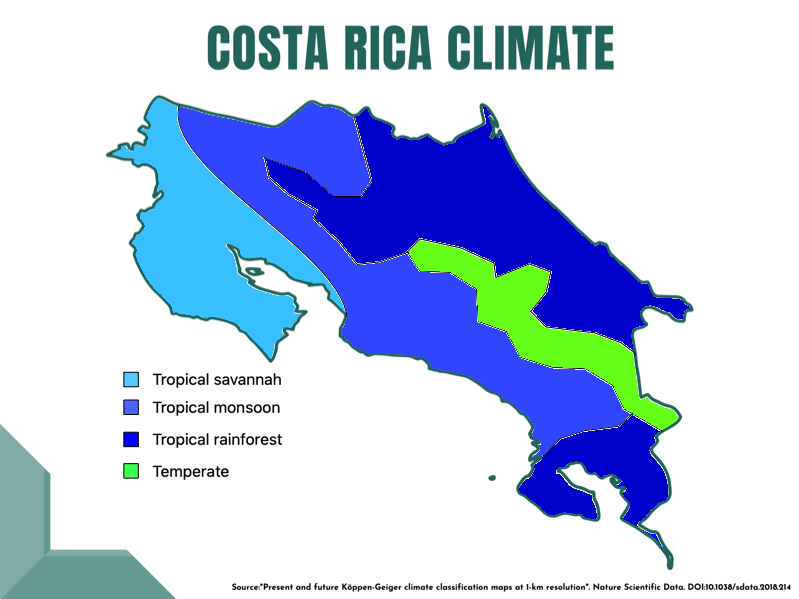
Average Temperature
As the climate is tropical throughout most of Costa Rica, you can see there is not much deviation during the year. The average temperatures vary between 75-79 Fahrenheit (24-26 Celsius), with maximum temperatures between 83-90 Fahrenheit (28-32 Celsius) and minimum temperatures between 65-69 Fahrenheit (18-20 Celsius).
The difference between the dry and rainy seasons is not temperature but humidity and precipitation. The below graph was drawn up using the historical data collected between 1991-2020 by the WorldBank database.
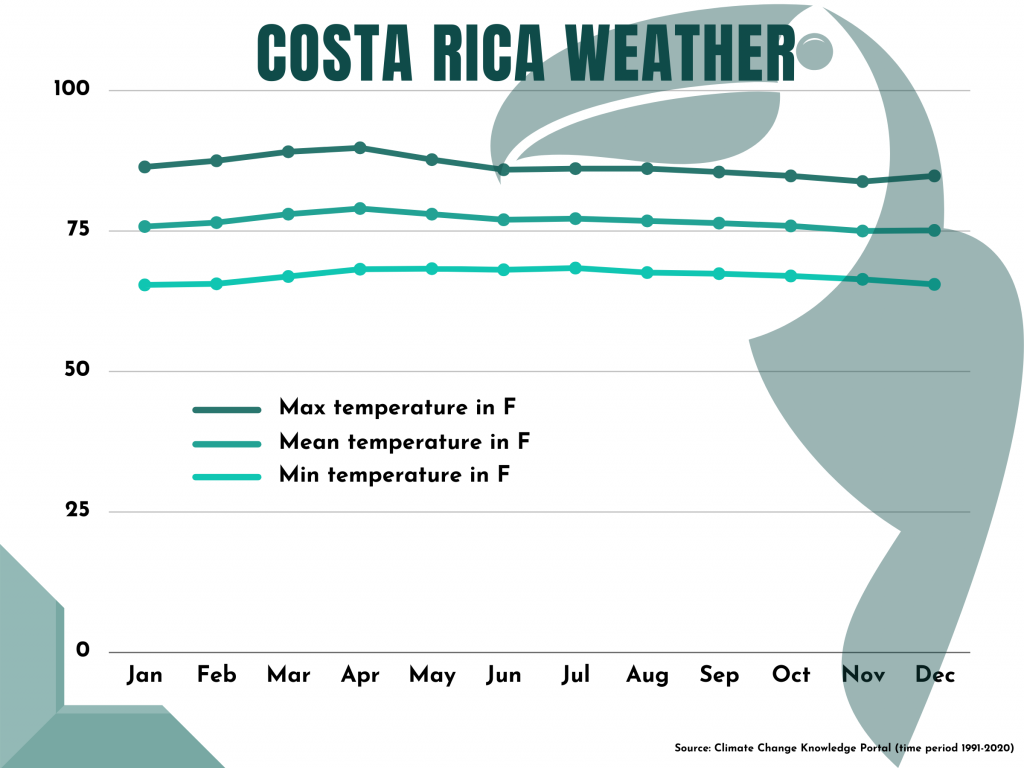
Average Precipitation
Most people would like to know during which month the most rain will fall. It is natural, as you would think that when there is rainfall, you don’t get to do anything, so you want to avoid it.
According to the historical data collected between 1991-2020 by the WorldBank database in Costa Rica, the rainy season usually starts in May and lasts until November.
April is called the shoulder season, which is kind of a transitional period between the dry and the rainy season. There is gradually more and more rain, but not so much yet. While the previous barren landscapes start to be reborn.
There is also a special time called “veranillo” or mini-summer end of June, around 24 June, where there is a temporary decline in precipitation. So visitors can enjoy a green season with less rainfall.
“Canícula” is usually between mid-July and mid-August, when Costa Rica experiences something similar to an “Indian summer”.
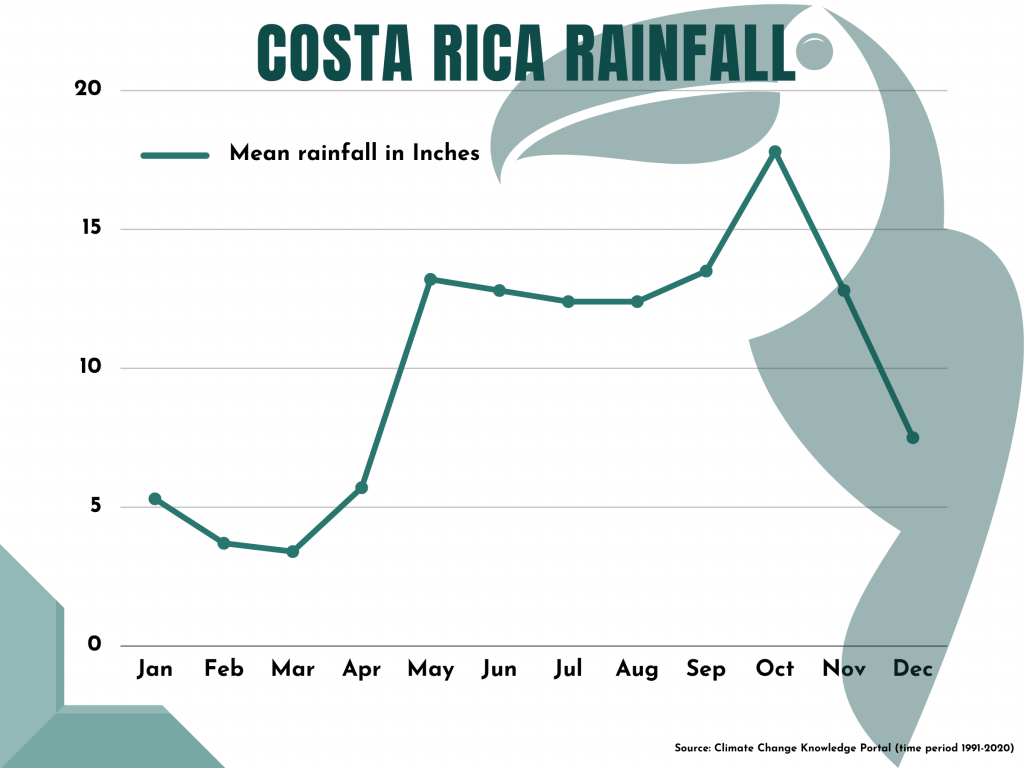
Dry season – expensive, crowded
For tourists, who prefer hot summer days with less rainfall, the best time to go to Costa Rica is between November and April. Furthermore, several major holidays fall during this period like Christmas, New Year’s Eve, and even Easter, which means people have free time to travel.

What to expect during this season?
- Peak season, high prices – These are the hottest months in Costa Rica, especially between January and March. Most of the tourists book their stay for the dry season. Which means accommodations are offered at the highest prices.
- Hot and dry – Just as its name suggests, this season is the hottest and driest. You should expect high temperatures, barren landscapes, smaller waterfalls and rivers, dried-up dirt roads, BUT there will be blue sky, and the sun is shining all day long (mostly). Guanacaste can be especially dry since its climate is tropical savanna.
Victoria, a full-time writer and photographer traveling around Central America said, “Costa Rica has a distinct wet and dry season, and I would highly recommend choosing the dry season to visit if you can. Your chances of having good weather will be far more likely during November to April, although prices can be higher. However, in my opinion, the investment is worth it, and you’ll be able to do a lot more than in rainy season. You just need to book a bit further in advance to make sure you can get the best prices. You’ll also meet a lot more other travelers along the way, especially if you’re a backpacker.
Activities you can do
- Bird watching – Dry season is ideal for bird watching as you can hide within the shades of the rainforest. You may get to see several of the famous Costa Rican birds.
- Surfing and swimming in the sea – No storms, no El Nino, or other meteorological phenomena to spoil your time on the beach. Swim, surf, dive, or just sunbathe.
- Volcano tours and hiking – If you want to escape the hot weather, join a volcano tour or hike a mountain trail. As you go higher, temperatures are bound to drop a couple of degrees.
- Nature walks – Discover one or more of Costa Rica’s National Parks and Reserves. You can also visit one of the best zip-lining parks, where you can find not only zip lines, but hanging bridges, cable cars, and treetop walkways.
- Humpback whale migration (Uvita) – They reach the shores of Costa Rica first around September, but their migration season can last for several months. So you may be able to catch the end.
- Fishing – Especially for freshwater fishing, the dry season is the best time as lakes and rivers shrink, making the fish congregate in more accessible areas. Read more in our guide to fishing in Costa Rica.
READ ON – 36 Eco-Friendly Things to Do in Costa Rica.
Rainy season – low prices, fewer tourists
The rainy season in Costa Rica starts in May and lasts until November. According to this Biological Weather Station, during this season, the rainfall gradually increases up to about 400 mm on average per month, being October statistically the wettest.
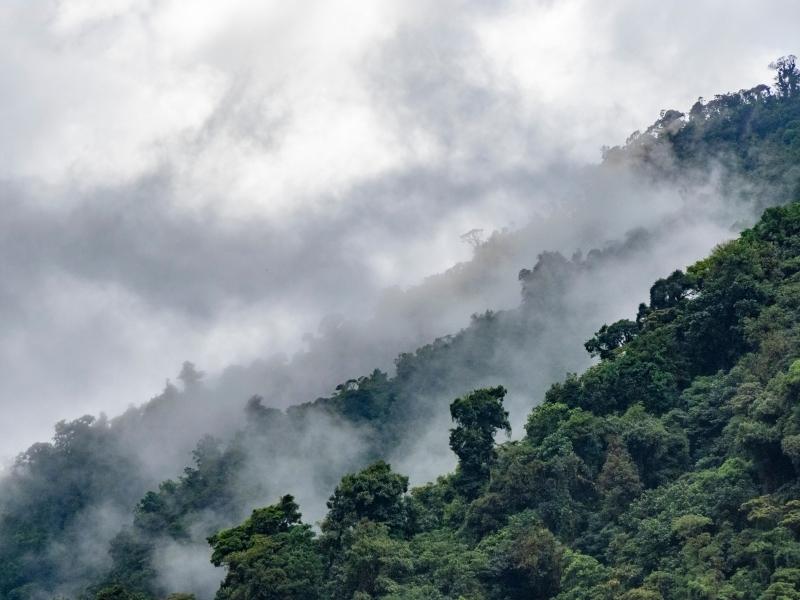
What to expect during this season?
- High humidity – While the average temperature is not changing that much during the year, the humidity increases significantly.
- Mosquitoes love this season – They are most active during dusk and dawn as well as near lakes and swampy areas like wetlands. According to Christa from Pura Vida Moms, the worst place to go if you want to avoid mosquitoes in Costa Rica is the Caribbean Coast (around Tortuguero National Park), Osa Peninsula (around Corcovado National Park), and the Southern Pacific area (around Pavones). So get your bug repellent and choose a lodge with a mosquito net.
- Problematic road conditions – Due to heavy rainfall and the fact that paved roads may not have good drainage, water can remain on the road rendering the potholes or even the line of the road not visible. If the road is unpaved, the mud can turn so thick that even 4x4s can get stuck.
- Lower prices, smaller crowds – Tourists in general prefer dry season, therefore you can find more affordable prices and fewer people if you choose this season.
Lori, a slow travelers behind Travlinmad recommends that if you are planning road-tripping in Costa Rica, the dry season offers much greater accessibility to drive in more remote parts of the country. However, the back roads of Costa Rica can easily become impassible when the summer rains create mud so thick it can even bog down a 4×4. However, the green season in Costa Rica can be a much better option if you are staying for a longer holiday and want to save your hard-earned dollars. Traveling in the summer offers much lower prices and smaller crowds, two of the biggest perks for slow travelers.
Activities you can do
- Waterfall rappelling – More rains mean the waterfalls are the largest during this season. You can get close to many of them and even swim in some. You will get wet no matter what when visiting one of the Costa Rican waterfalls.
- Whitewater rafting – Same goes here. You may get yourself wet, even if you don’t want to.
- Zip-lining and canopy tours – You can discover the lush green rainforest easily by riding ziplines or participating in canopy tours.
- Turtle watching – The best time to catch them is between August and November.
- Humpback whale migration (Uvita) – They reach the shores of Costa Rica first around September, but their migration season can last for several months.
- Fishing – Marlin and sailfish action is best in May through October in the Northern regions of the Pacific Coast. Read more in our guide to fishing in Costa Rica.
- Scuba diving (Bat Islands aka Islas Murciélagos) – Large population of bull sharks and manta rays can only be sighted during the rainy season for experienced divers*.
- Coffee tours – The coffee harvest season starts in September.
READ ON – 36 Eco-Friendly Things to Do in Costa Rica.
Veranillo – mini summer at the end of June
There is a special time of the year in Costa Rica when they should be in the middle of the rainy season, but still, they experience I decline in rainfall. Veranillo de San Juan (around 24 June) is a meteorological phenomenon where you get to experience the lush and green scenery without the heavy rainfalls and whirlwinds.
It sounds amazing, right? Can it be that veranillo is the best month to go to Costa Rica? Hold your horses before booking. Veranillo can be quite limited to certain areas as well as in time. For example, in 2013 it was only in Guanacaste, and in 2018 it only lasted for 5 days in the Central Valley and along the Pacific Coast. Be sure to get information on the yearly forecast before deciding, as it can happen that you travel to a region where veranillo will not even appear.
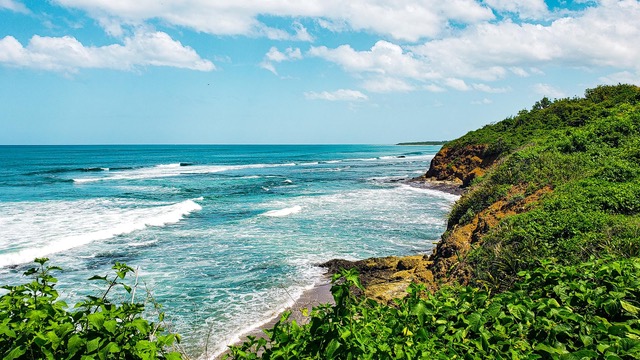
What to expect during this season?
Veranillo could be the best time to visit Costa Rica, but it is not easy to catch. This phenomenon usually lasts for only 1-7 days. It is a dry period right in the middle of the rainy season. During veranillo you can enjoy sunny and warm weather with lush green surroundings. Prices are lower than during the high season, and the country isn’t usually too overrun with tourists.
Sara from Costa Rica Vibes recommends the Pacific Coast for veranillo. Specifically, the Guanacaste Province in the northwest corner of the country will have excellent weather. Here you can experience surfing in Tamarindo for all skill levels, scuba diving along marine-filled reefs in Playas del Coco, hiking at an active volcano in Rincon de La Vieja National Park, and absolute relaxation at a resort on the Papagayo Peninsula.
READ ON – 36 Eco-Friendly Things to Do in Costa Rica.
Canícula – heatwave during the rainy season
The “canícula” refers to a period of hot and dry weather amidst the rainy season, which typically occurs between July 15 and August 15. The time frame is slightly different depending on the region. The IMN, Costa Rica’s National Meteorological Institute, publishes predictions each year.
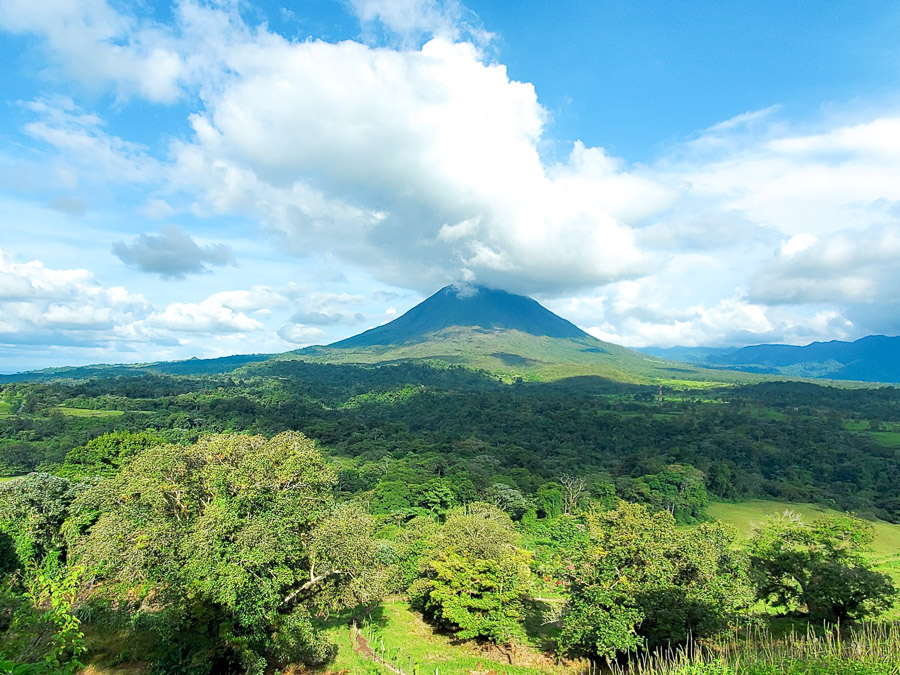
What to expect during this season?
During this time, rainfall decreases in quantity and intensity, or may even cease completely, for a duration ranging from 5 to 15 days. Temperatures rise, and winds become stronger. The heatwave is most prominently experienced in the North Pacific, Central Valley, Los Santos area, and the General Valley. Canícula typically a series of consecutive dry days mixed with some rainy days.
Stephanie from The Unknown Enthusiast says a trip to Costa Rica in July is a great time to experience what the country has to offer. By the end of June, the vegetation has recovered from the lack of rain during the dry season and is absolutely lush and green, but hasn’t gotten too deep into the rainy season yet. You can count on sunrise being clear and bright, with late afternoon rain showers being fairly regular, though not occurring every day. This early in the rainy season, it hasn’t gotten too muddy yet, and the bugs are not nearly as thick as they get later in the season.
READ ON – 36 Eco-Friendly Things to Do in Costa Rica.
Shoulder season – the best time to visit Costa Rica?
Can it be that the shoulder season is really the best time to travel to Costa Rica? It may, as well. Rainfall is expected to start around April and May, but it will only increase gradually in time. It means there may only be 1-2 hours of rain, and then the sky is all clear to do any activities you want. Considering that October is the wettest month, the end of spring is quite far from it.

What to expect during this season?
- Outside peak season – It may fall outside peak season in the calendar of several eco-lodges. Be sure to check that. There are also fewer tourists, so even the popular locations will not feel too crowded. You get to enjoy the activities as a true eco-tourist.
- Mild showers – The climate is just going into the rainy season. You can expect mild rainfall.
- Green nature – Especially in May and especially in areas that can get really dry (like Guanacaste), you get to experience how flora and fauna wake up due to the wetter weather.
Haley from Gathering Waves reflects on her personal travel experience when she recommends the shoulder season as the best time to visit Costa Rica. She spent the first half of a year living in Nosara, Costa Rica and experienced the height of both the dry and the rainy seasons. She says that April and May were by far the best! During the shoulder season, there were a fraction of the tourists. The rains in the shoulder season are also not too bad. Typically, it will be warm and sunny in the mornings and early afternoons, and storm in the evenings and at night. The rain in the evenings was well worth the lack of tourists. And, with a little more rain, Costa Rica becomes much less dry and far more green and lush, making it all the more beautiful.
READ ON – 36 Eco-Friendly Things to Do in Costa Rica.
More about Costa Rica
Emese Maczko is a travel blogger behind Eco Lodges Anywhere. Having explored several destinations around Europe, the US, Indonesia, and Australia, and resided in Germany, the United Kingdom, and Luxembourg, Emese possesses a keen understanding of diverse cultures and an appreciation for the beauty of each destination she visits. She advocates for sustainable travel and ecotourism.
